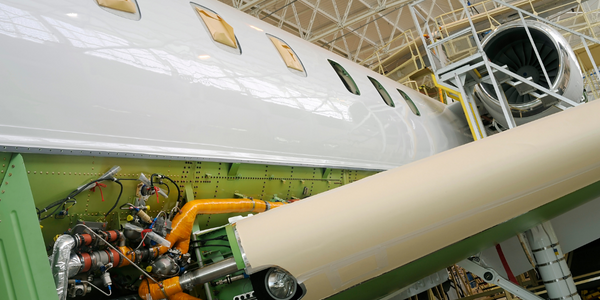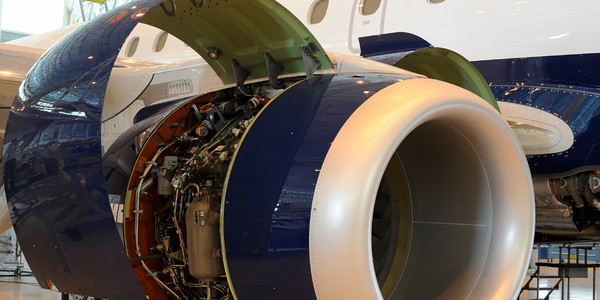Technology Category
- Sensors - Infrared Sensors
Applicable Industries
- Aerospace
- Life Sciences
Applicable Functions
- Product Research & Development
- Quality Assurance
Use Cases
- Additive Manufacturing
- Rapid Prototyping
About The Customer
Thales Alenia Space is a leading European aerospace manufacturer with a presence in France, Italy, Spain, Belgium, the UK, Germany, and Poland. The company designs, integrates, tests, operates, and delivers space systems for the defence, Earth observation, communication, navigation, and security markets. With around 7,500 employees around the world, Thales Alenia Space is at the forefront of the development, implementation, and industrialization of additive manufacturing in the aerospace industry. The company is constantly exploring new technologies and manufacturing processes to improve its products and services.
The Challenge
Thales Alenia Space, a European aerospace manufacturer, was keen to explore the potential of additive manufacturing (AM) for its space satellite development programs. The company wanted to investigate the weight-saving potential of AM when combined with design optimization techniques. The challenge was to find a way to use these techniques in conjunction with new manufacturing technology. Thales Alenia Space chose a satellite’s aluminium filter bracket as a test case for the study. The bracket required a unique combination of both structural loads from the components that it supports, as well as thermal loads from the airflow through the filters and the temperature extremes of travelling to space. The primary objective of the study was to use design optimization techniques to reduce the thermal compliance of the bracket, while also optimizing the component for weight and readying the final design for the additive manufacturing process.
The Solution
Thales Alenia Space partnered with Altair ProductDesign due to Altair’s expertise in developing design optimization technologies and implementing them in the aerospace industry. Altair ProductDesign’s first step was to convert the existing models of the bracket to a format that could be used with HyperWorks’ OptiStruct structural analysis solver and combine the two models together to create a unique thermal-structural model. This allowed the effects of both sets of constraints to be explored in parallel. Once the new model was confirmed to be an accurate representation of the physical bracket, the team moved on to the design optimization stage. Using OptiStruct, the team set up the model and specified numerous constraints that the technology would have to adhere to in order to provide a satisfactory solution. The bracket was divided into sections of 'designable' and 'nondesignable' space. Using topology optimization techniques, OptiStruct suggested a new material efficient design that met the performance criteria while removing material from areas that did not positively affect the design. The suggested geometry was then interpreted into a layout that was more suitable for the AM process and converted to a manufacturable CAD model.
Operational Impact
Quantitative Benefit

Case Study missing?
Start adding your own!
Register with your work email and create a new case study profile for your business.
Related Case Studies.

Case Study
Airbus Soars with Wearable Technology
Building an Airbus aircraft involves complex manufacturing processes consisting of thousands of moving parts. Speed and accuracy are critical to business and competitive advantage. Improvements in both would have high impact on Airbus’ bottom line. Airbus wanted to help operators reduce the complexity of assembling cabin seats and decrease the time required to complete this task.

Case Study
Aircraft Predictive Maintenance and Workflow Optimization
First, aircraft manufacturer have trouble monitoring the health of aircraft systems with health prognostics and deliver predictive maintenance insights. Second, aircraft manufacturer wants a solution that can provide an in-context advisory and align job assignments to match technician experience and expertise.

Case Study
Aerospace & Defense Case Study Airbus
For the development of its new wide-body aircraft, Airbus needed to ensure quality and consistency across all internal and external stakeholders. Airbus had many challenges including a very aggressive development schedule and the need to ramp up production quickly to satisfy their delivery commitments. The lack of communication extended design time and introduced errors that drove up costs.

Case Study
Developing Smart Tools for the Airbus Factory
Manufacturing and assembly of aircraft, which involves tens of thousands of steps that must be followed by the operators, and a single mistake in the process could cost hundreds of thousands of dollars to fix, makes the room for error very small.

Case Study
Accelerate Production for Spirit AeroSystems
The manufacture and assembly of massive fuselage assemblies and other large structures generates a river of data. In fact, the bill of materials for a single fuselage alone can be millions of rows of data. In-house production processes and testing, as well as other manufacturers and customers created data flows that overwhelmed previous processes and information systems. Spirit’s customer base had grown substantially since their 2005 divestiture from Boeing, resulting in a $41 billion backlog of orders to fill. To address this backlog, meet increased customer demands and minimize additional capital investment, the company needed a way to improve throughput in the existing operational footprint. Spirit had a requirement from customers to increase fuselage production by 30%. To accomplish this goal, Spirit needed real-time information on its value chain and workflow. However, the two terabytes of data being pulled from their SAP ECC was unmanageable and overloaded their business warehouse. It had become time-consuming and difficult to pull aggregate data, disaggregate it for the needed information and then reassemble to create a report. During the 6-8 hours it took to build a report, another work shift (they run three per day) would have already taken place, thus the report content was out-of-date before it was ever delivered. As a result, supervisors often had to rely on manual efforts to provide charts, reports and analysis.




